Japanese Knotweed identification
For Japanese Knotweed identification Knotweed Doctor have PCA qualified Japanese Knotweed surveyors and technicians across the North West to help you identify the invasive weed. You can self-identify Japanese Knot weed with our quick guide here or by sending us your photographs.
How to Identify Japanese Knotweed
Asparagus-like shoots purple or green
Vivid green spade shaded leaves
Zig-zag leaf pattern growing on alternative sides
Bamboo-like green stems with purple spots
White/cream clusters of flowers
Japanese Knotweed Shoots
Red/purple asparagus-like shoots appear in early spring as the ground thaws.
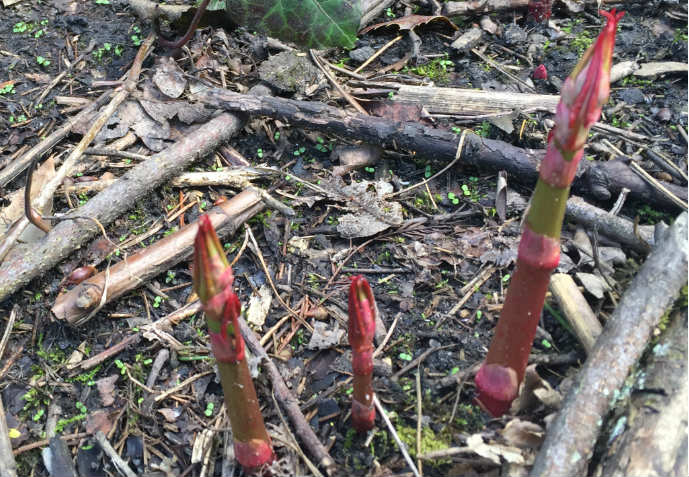
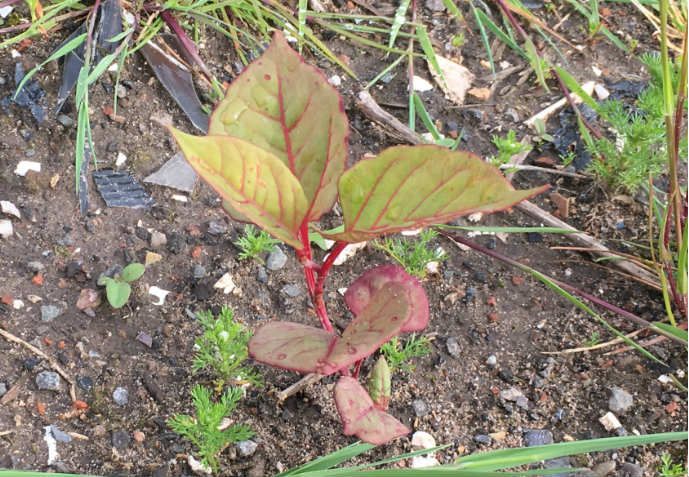
Young Knotweed Plant
Leaves open out and quickly begin to turn green.
Zig-zag leaf pattern
The leaves always grow on alternative sides hence they produce a zig-zag pattern.
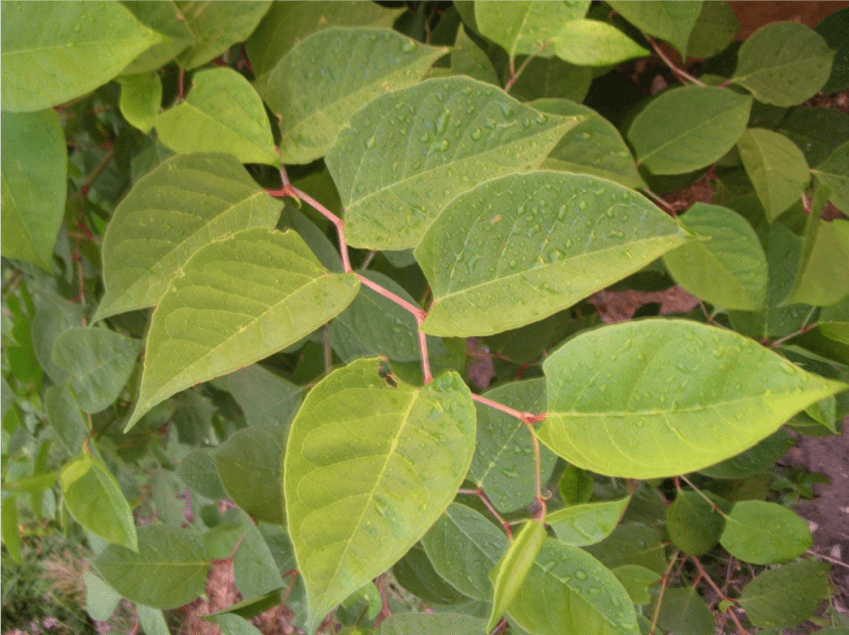
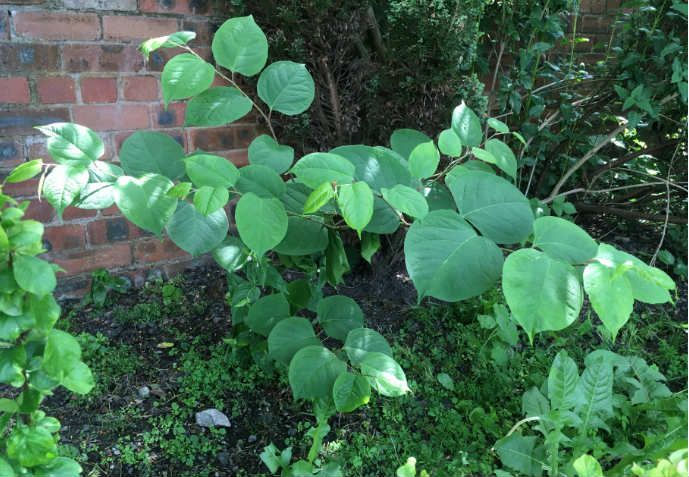
Spade-like leaves
Spade or shield shape leaves with a flat edge and a lush green colour.
Japanese Knotweed Stems
By early-mid summer the mature hollow stems have purple speckles.
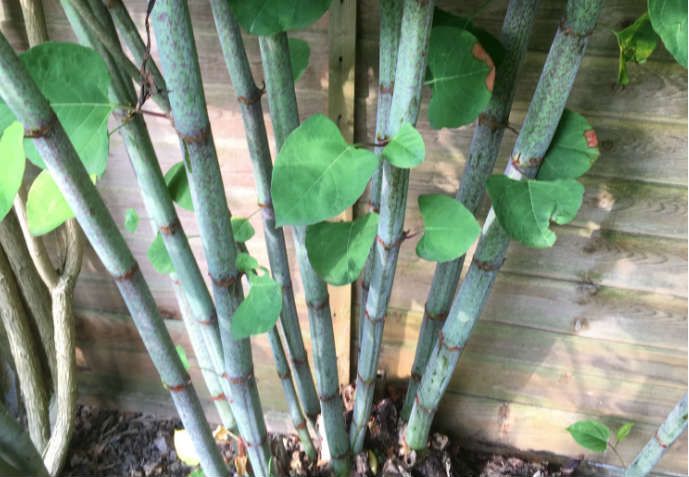
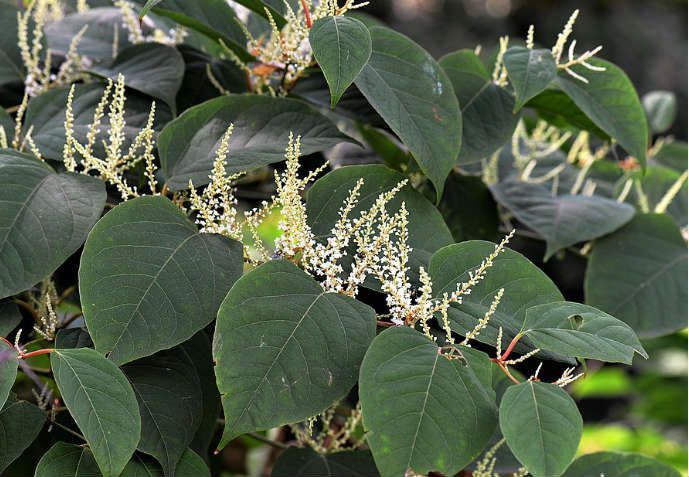
Flowering Knotweed
By late summer lengthy cream/white clusters of flowers appear.
Rhizome
The root system if not treated correctly can shock the plant in a dormant state making it harder for even an expert to kill. The rhizome is a yellowy/orange colour, is woody and easily snapped and spread without the proper care.
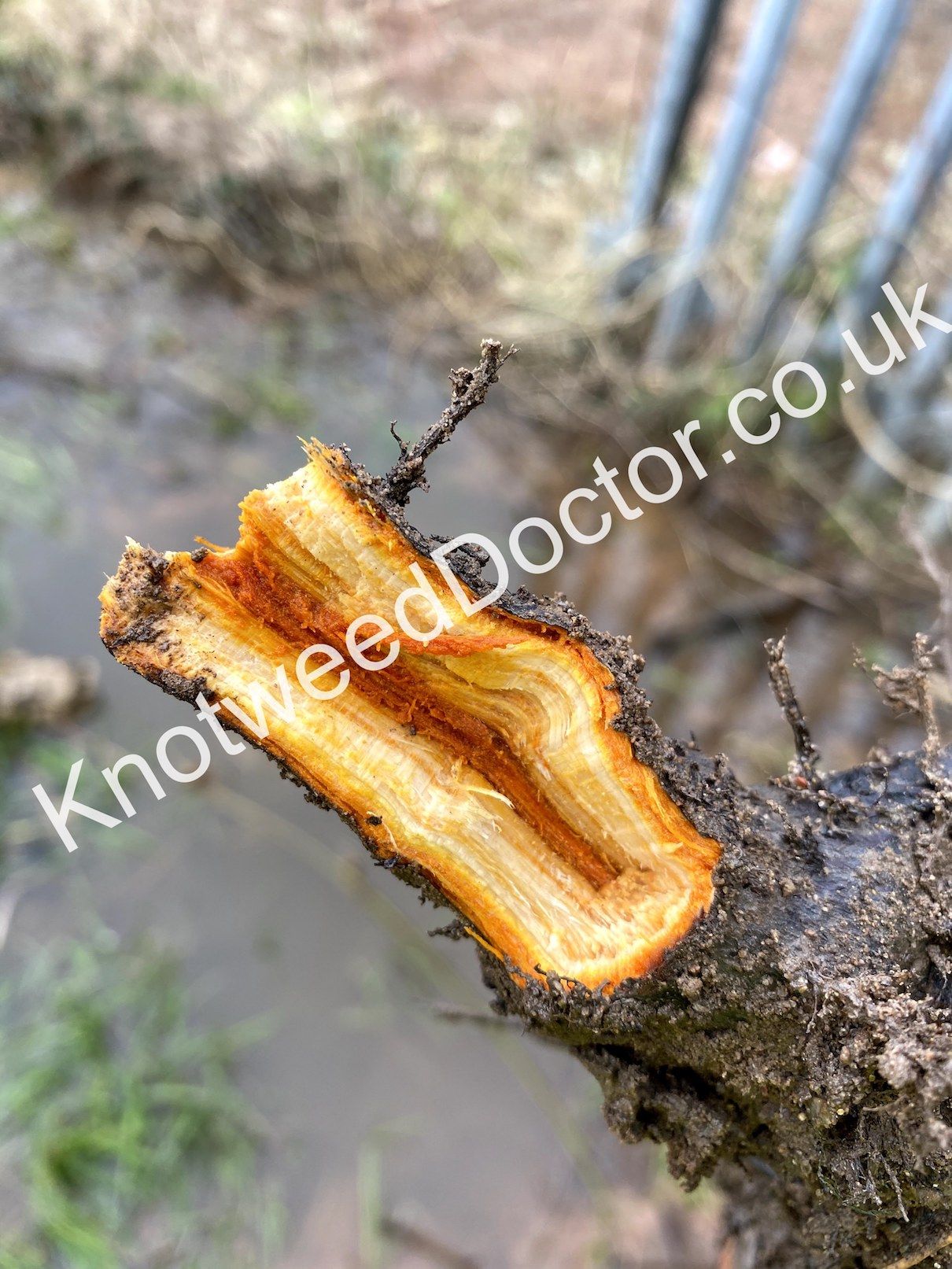

Dead Japanese Knotweed canes
In late autumn the Japanese Knotweed begins to die back into its rhizome which remains dormant during the winter season. The leaves turn brown and fall to the ground, the stems loose their colour leaving a dense woody cane.




What Does Japanese Knotweed Look Like?
So how do you identify Japanese Knotweed correctly? The plant is often misidentified, however, there are a few simple things to watch out for. Depending on the time of year the unwanted plant will appear very different.
In Wintertime the leaves fall off and the stems turn brown. The dead woody stems can take 4 seasons to breakdown and can be safely cut back in late winter. Check for hollow bamboo-like stems. Early Spring growth starts with reddish asparagus-like shoots. These quickly turn green as they feed off the sun and produce chlorophyll. The leaves start to open often with red veins. In summer you can clearly see heart-shaped leaves which always grow on alternative sides. This creates the tell-tale zig-zag pattern most commonly used for Japanese Knotweed identification. Knot weed can grow to 2.5-3m height. Furthermore, the stems are green with purple spots. Late in summer, you will see creamy, white spikey clusters of flowers and sometimes small paper-thin seeds on the plant.
Interested in Japanese Knotweed identification know how?
Our professional team have specialist knowledge and years of experience dealing with this invasive plant. We will advise you on the best way to remediate the knotweed.
Japanese Knotweed Solutions Near Me
For Japanese-knotweed solutions near me we have PCA surveyors and technicians with many years’ experience spotting this weed. If you want someone to come, identify and remove or control the weeds Knotweed Doctor can help. Our team of specialists will help you find a solution whatever stage of the plant’s growth. If you’ve got any concerns about plant infestation near to your property, contact our team. Get in touch now.
Knotweed Doctor can get our local experts to remove and treat the invasive plant. Also we can ensure you don’t have further problems. We are experts when it comes to identifying it. Our professionals are happy to help with professional identification.
If you need further help and need formal Japanese Knotweed identification, please contact us on 0800 020 9171. We can advise you on what needs to be done to remove the knotweed and prevent it growing back
Frequently asked questions
What is Japanese Knotweed?
Fallopia japonica is a herbaceous perennial plant species, the growth above ground dies every year but the roots survive. In the UK it is an aggressive non-native invasive weed that can cause damage to properties.
How does japanese knotweed spread?
Whilst Japanese Knotweed can produce seeds it is extremely rare in the UK for them germinate. The most common way the plant spreads is through disturbance of the stems, crowns or rhizome (root system). Strimming spreads pieces of stem which can become new plants. Crowns can survive composting and regrow. Breaking up the rhizome can stimulate the production of new small red buds, that is why it is important to get trained professionals treat any infestation.
